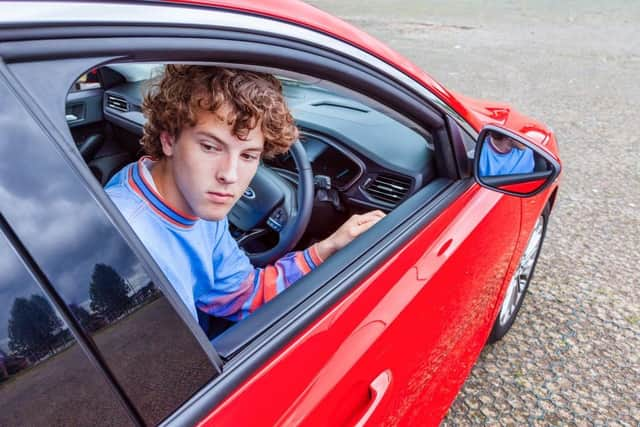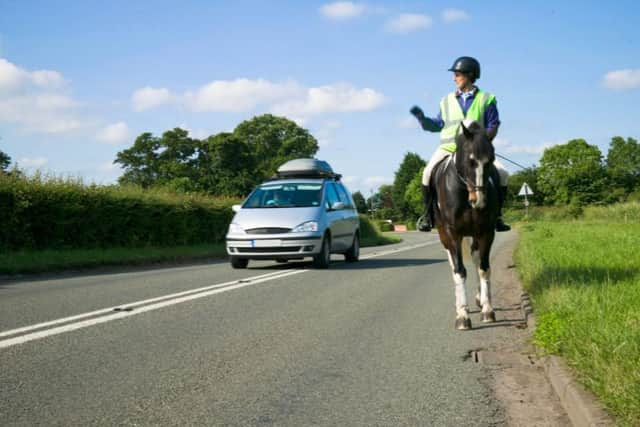The eight new rules in The Highway Code, including who has priority at junctions
and live on Freeview channel 276
The changes to the rules, which will be updated in The Highway Code, are aimed at improving the safety of people walking, cycling and riding horses.
This decision follows a public consultation which ran from July to October 2020, and received more than 20,000 responses from the public, businesses and other organisations.
Advertisement
Hide AdAdvertisement
Hide AdMost people who responded were in favour of all the changes.


Here are the eight changes that you need to know about before they come into effect on January 29.
What are the eight new rules?
The first rule represents the hierarchy of road users.
This is the most major reform, which states that individuals who have the greatest potential for harm (those driving large vehicles) bear the greatest duty for reducing the risk they represent to other road users.


Pedestrians, cyclists, horse riders, motorcyclists, cars/taxis, vans/minibuses, and lastly, large passenger vehicles/heavy goods vehicles make up the new road user hierarchy.
Advertisement
Hide AdAdvertisement
Hide AdThe second rule is to give priority to people crossing the road at junctions, and this applies to drivers, motorcyclists, horse drawn vehicles, horse riders and cyclists.
The rule states: "At a junction you should give way to pedestrians crossing or waiting to cross a road into which or from which you are turning.
"You must give way to pedestrians on or waiting to cross a zebra crossing, and to pedestrians and cyclists on or waiting to cross a parallel crossing.
"Horse riders should also give way to pedestrians on a zebra crossing, and to pedestrians and cyclists on a parallel crossing.
"Wait to turn near cyclists or horse riders."
Advertisement
Hide AdAdvertisement
Hide AdThe third rule is when cars are turning, bikes have priority.
When coming into or out of a junction, or changing direction or lane, other road users should not cut over bikes, horse riders, or horse drawn vehicles going ahead.
It states that you should not turn at a junction if doing so will force the cyclist, horse rider, or horse-drawn vehicle ahead of you to stop or swerve. If necessary, you should stop and wait for a safe gap in the flow of cyclists.
The fourth rule is to position in the road while cycling.
There will be updated positioning advice for cyclists, including riding in the middle of their lane on quiet roads, in slower-moving traffic, and approaching junctions or road narrowings; and staying at least 0.5 metres (just over 1.5 feet) away from the kerb edge (and further if it is safer) when riding on busy roads with vehicles moving faster than them.
Advertisement
Hide AdAdvertisement
Hide AdPeople riding bicycles are also advised to be aware of people driving behind them and to enable them to overtake when it is safe to do so, for example, by moving into single file or stopping.
More updated rules involving cyclists
The fifth rule is overtaking when driving or cycling.
Drivers may cross a double-white line if necessary (provided the road is clear) to overtake someone cycling or riding a horse if they are travelling at 10 mph or less.
There will also be updated guidance on safe passing distances and speeds for people driving or riding a motorcycle when overtaking vulnerable road users, including leaving at least 1.5 metres (5 feet) when overtaking people cycling at speeds of up to 30mph, and giving them more space when overtaking at higher speeds.
This also applies to drivers as they pass people riding horses or driving horse-drawn vehicles at speeds under 10 mph and allowing at least 2 metres (6.5 feet) of space and allow at least 2 metres (6.5 feet) of space and keeping to a low speed when passing people walking in the road (for example, where there’s no pavement)
Advertisement
Hide AdAdvertisement
Hide AdThe drivers also need to wait behind them and do not overtake if it’s unsafe or not possible to meet these clearances.
The sixth rule is for people cycling at junctions.
The code will be changed to state that cyclists must give way to pedestrians crossing or waiting to cross when turning into or out of a side road.
At some junctions, new information regarding new specific cycle facilities will be available.
Some junctions now have small cycle traffic lights at eye-level height, allowing cyclists to proceed ahead of or separate from other traffic.
Advertisement
Hide AdAdvertisement
Hide AdCycling enthusiasts are encouraged to take advantage of these amenities, which make their journey safer and easier.
There will also be new instructions for cyclists at intersections where there are no special facilities.
Where there are no dedicated cyclist facilities, the code recommends that cyclists proceed as if they were driving a vehicle.
This includes putting yourself in the middle of their selected lane, if they feel able to do this safely.
Advertisement
Hide AdAdvertisement
Hide AdThe seventh rule is for people cycling, riding a horse and driving horse-drawn vehicles on roundabouts.
The code will be updated to clarify that people driving or riding a motorcycle should give priority to people cycling on roundabouts. The new guidance will say people driving and or riding a motorcycle should not attempt to overtake people cycling within that person’s lane.
They should also allow people cycling to move across their path as they travel around the roundabout.
The code already explains that people cycling, riding a horse and driving a horse-drawn vehicle may stay in the left-hand lane of a roundabout when they intend to continue across or around the roundabout.
Advertisement
Hide AdAdvertisement
Hide AdGuidance will be added to explain that people driving should take extra care when entering a roundabout to make sure they do not cut across people cycling, riding a horse or driving a horse-drawn vehicle who are continuing around the roundabout in the left-hand lane.
What is the ‘Dutch Reach’?
The eighth rule is about parking, charging and leaving vehicles
The code will recommend a new technique when leaving vehicles which is sometimes called the ‘Dutch Reach’.
Where people driving or passengers in a vehicle are able to do so, they should open the door using their hand on the opposite side to the door they are opening.
Advertisement
Hide AdAdvertisement
Hide AdFor example, using their left hand to open a door on their right-hand side. This will make them turn their head to look over their shoulder behind them.
They’re then less likely to cause injury to people cycling or riding a motorcycle passing on the road and people on the pavement.
For the first time, the code will also include guidance about using electric vehicle charging points where people are asked to park close to the charge point and avoid creating a trip hazard for people walking from trailing cables.
They are also encouraged to display a warning sign if they can and return charging cables and connectors neatly to minimise the danger to other people and avoid creating an obstacle for other road users.
Where can I get the full version of The Highway Code?
Advertisement
Hide AdAdvertisement
Hide AdThe full version of The Highway Code is available, free of charge, on GOV.UK. This will be updated on 29 January 2022.
You can pre-order an updated version of The Highway Code book online now, and buy a copy at most high street bookshops from April 2022. It will have a new cover design so it’s easy to recognise.

